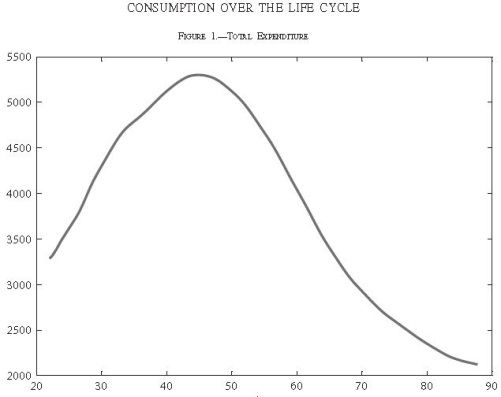California-bred supply-side economics is coming back
By Chriss Street
The Great Recession was primarily caused by the collapse in economic demand as 70 million baby boomers born between 1946 and 1964 moved out of their peak spending years in their mid-30s to mid-50s and into retirement in their late 50s and early 60s. The U.S. government over the last five years squandered $7.6 trillion on Keynesian demand-side stimulus programs, trying to resuscitate this demographically shrinking demand.
With only 23 million born between 1995 and 2012 in Generation Z, this population is just too small for demand-side stimulus to revive the economy. America is now deep in debt, facing 23 million unemployed, and needs to fund the baby boomer’s retirement. Consequently, politicians are being forced to abandon demand-side stimulae and re-embrace supply-side economics.
The Revolutionary War was sparked by Great Britain’s demand that the American Colonies pay increasingly higher taxes to support England’s expanding national debt. Once independent, the new U.S. Constitution’s Commerce Clause established a free-trade zone among the states and passed the Sinking Fund Act of 1795 to require a significant amount of tax revenue be set aside each year to quickly pay off any outstanding national debt. These policies created an economic boom that allowed the United States to be debt-free by the 1830s.
This concept of encouraging long-term economic growth by lowering taxes on income and reducing regulatory burdens that serve as barriers for people to produce goods and services is referred to as “supply-side economics.” The Founding Fathers understood that a greater supply of goods and services produced increases demand by lowering prices for consumers.
But during the Great Depression, Washington politicians abandoned supply-side and imported Keynesian “demand-side” economics from Great Britain. Demand-side economics argues that, in the “short-run,” productive activity is influenced by aggregate demand (total spending in the economy) and that aggregate demand may not always equal aggregate supply (the total productive capacity of the economy), because private-sector decisions often lead to “inefficient market outcomes.” Therefore, government should create demand through targeted spending. Armed with this smoke screen, U.S. short-term spending has risen every year since 1948, as politicians always found some inadequate market demand that needed more spending.
California revival
California’s own President Ronald Reagan revived supply-side economics in the 1980s with Reaganomics. The policy ended the oil windfall profits tax to stimulate oil production, passed the Economic Recovery Tax Act of 1981 and the Tax Reform Act of 1986 to cut taxes and eliminate deductions, and instituted a payroll tax to begin a “sinking fund” to reduce the accumulated liability of Social Security and Medicare. Although Reagan was never able to reduce total spending, he did start a huge economic boom that lasted until 2001 and led to huge United States Treasury surpluses in the late 1990s.
 Most Americans do not realize that Reagan’s biggest ally for his supply-side encouragement of economic growth was the demographics of the baby-boomers. Studies demonstrate that 50 percent of all durable (cars and houses) and non-durable (food and clothing) expenditures are directly related to household demographics. Spending tends to peak as families grow and people reach their mid-30s to mid-50s. Then spending declines rapidly after the mid-50s.
Most Americans do not realize that Reagan’s biggest ally for his supply-side encouragement of economic growth was the demographics of the baby-boomers. Studies demonstrate that 50 percent of all durable (cars and houses) and non-durable (food and clothing) expenditures are directly related to household demographics. Spending tends to peak as families grow and people reach their mid-30s to mid-50s. Then spending declines rapidly after the mid-50s.
When Reagan began Reaganomics in August 1981, the first baby-boomers born in 1946 were just turning 35 years old. By the time those first baby-boomers hit 55 in 2001, the NASDAQ over-the-counter index of growth stocks had risen from 190 to more than 5000, a jump of 2,600 percent. As the boomers hit 55 and begin to retire through 2019, only 30 percent as many Generation Z members will replace them in the work force.
Politicians love demand-side economics because they get to look busy spending lots of money creating “demand” for their crony capitalist friends. On the other hand, a part-time Congress could manage a supply-side economic policy, because the policy is set once to encourage long-term economic growth.
But as we have been observing, the United States government will go bankrupt long before politicians can “create” enough demand to replace the shrinking consumption spending as the baby-boomers continue to rapidly retire. Having tripled the national debt since 2001 and recently suffering a credit downgrade, Congress has no other viable option than supporting a return to supply-side economics to encourage growth.
I expect Congress to soon update President Reagan’s playbook for supply-side growth. The United States has the world’s largest oil and gas reserves and last year those proven reserves rose by the highest amounts ever recorded. Much of the un-tapped oil is on federal land and Congress will begin deregulating the energy market to capture huge royalty payments on higher energy production.
Congress will also deregulate the utility industry. This will encourage up to $6 trillion in private-sector capital spending for new pipelines and refineries across the nation to connect and distribute new production. Corporate taxes and crony tax deductions will be slashed and individual taxes and deductions will be reduced.
America is on the verge of a huge economic expansion. Enjoy the ride!
Chriss Street appears on “THE AMERICAN EXCEPTIONALISM RADIO TALK SHOW”
Streaming Live Monday through Thursday from 7-10 PM
Click Here to Listen: www.edtalkradio.com
Please Call in at 530-742-5555
Related Articles
Detroit sends CA another bankruptcy warning
The Stockton and San Bernardino bankruptcies in 2012 were the largest for cities in American history — until Detroit in 2013.
Pension reformer files 3 state initiatives
JULY 13, 2011 Editor’s Note: The following is a statement from the California Center for Public Policy regarding three initiatives
GOP Split Over Pro-Redevelop Measure
SEPT. 17, 2010 By KATY GRIMES Proposition 22 appears to be a seething two-headed snake, with strong division between supporters




